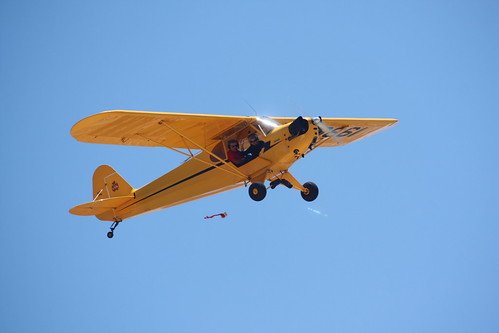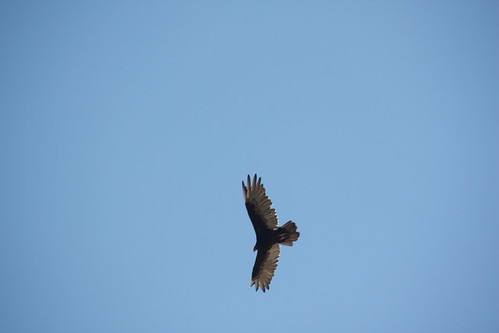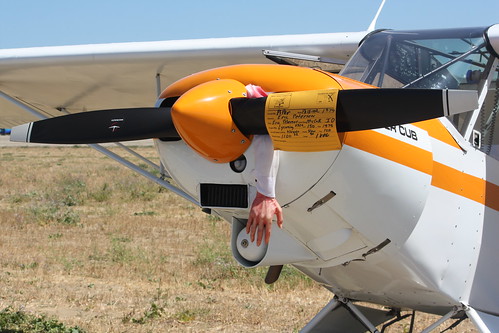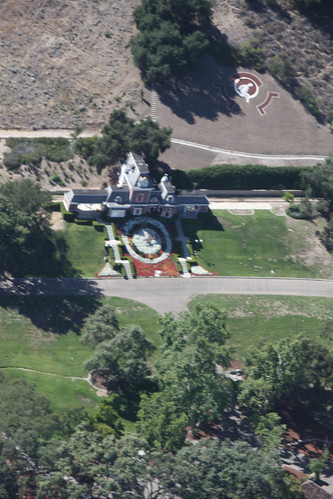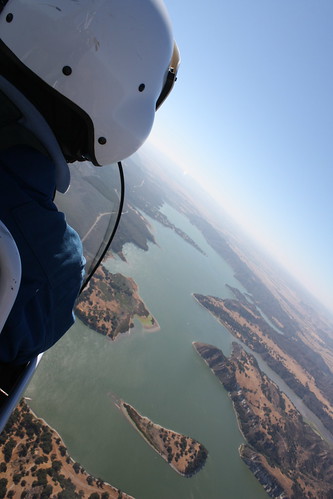- Joined
- Oct 30, 2003
- Messages
- 18,377
- Location
- Santa Maria, California
- Aircraft
- Givens Predator
- Total Flight Time
- 2600+ in rotorcraft
Yesterday was our last flight for a while. We flew to the Cub fly in at Lompoc and had a very nice day.
They had bomb drops and spot landings for 2.5 hours. The spot landing was touch a main down as close to the line as possible without touching down early. They didn’t have to stop and many bounced four times. The wind got up to 17kts steady straight down the runway.
On the way home we flew over Michael Jackson’s Neverland ranch.
Today we pulled the Predator's 135 horsepower O-290G out and planed the installation of the 160 horsepower IO-320B1A.
We managed to disconnect everything before we picked up the engine and everything went smoothly until I couldn’t reach one of the engine bolts because the plug for my strobes is hard up against the bolt. Once again I was reminded what a great job Mark Givans did designing and building the Predator.
I would really like to build a cowl over the engine and create some new fuel tanks. I am trying to keep it simple so that may have to wait until I have completed the installation.
Tomorrow we will begin building new engine mounts and work on the exhaust system.
The exhaust is a challenge in compromise. I am trying to minimize the blockage of air to the prop but I want it quiet and quiet with power means a large muffler. The most logical place for the muffler is right under the starter and alternator but I have long felt that heat is not good for either of these. I want to point the exhaust anywhere but down, it comes out the bottom of the heads so down is easy. The aftermarket systems that are made for a tight cowl pusher are all straight pipes. If I put the muffler in front of the engine, rear on a tractor, it will heat up the fuel injection.
The accessory case appears different and I don’t have a place for an oil filter. I have not found my vernatherm and don’t know where to hook up the oil cooler.
My inlet comes out the back of the sump, front of the sump on a pusher, instead of the bottom so I am hoping to lose some of my prop blockage.
I am also going to try laying the oil cooler down on the keel to have cleaner air to the prop. It is upright now ahead of the prop and has almost a square foot of area. It blocks the tunnel between the landing gear legs. There should be a low pressure area in front of the prop so it should suck and heat likes to go up. I think my air is going through too fast now. The oil cooler is very thin.
She is loaded up on the trailer now with her O-290G laying on the hanger floor stripped of her starter and alternator. The IO-320 is in the back of the truck still without her fuel injection. I weighed the engine without starter, alternator, fuel injection or exhaust and it came in at 245 pounds. I expect the extra stuff to add about 40 pounds.
My new flywheel does not have the correct pitch for the starter so something will have to happen there.
Ed took some pictures and she will post them after she removes a layer or two of oil and grease. I pulled some muscles in my back loading my engine hoist on the trailer so she had to do a lot of the hard work. It was starting to fall on Ed and I did a twisting lift. OOPS. Ouch!
The Van Nuys FSDO says to send him a copy of an aircraft logbook entry on the installation and where I am going to fly off my 5 hours and he will get right back to me with an OK in writing. He was very nice.
I would guess the end of August is an optimistic fly date. That is what I am aiming for. I may miss flying in the Air Show at SMX in August. I want to fly to El Mirage with Ed in the back seat for the Ken Brock Freedom Fly In.
I will try to document the progress. I am not as fast as some on the forum so the postings will be intermittent.
Thank you, Vance
They had bomb drops and spot landings for 2.5 hours. The spot landing was touch a main down as close to the line as possible without touching down early. They didn’t have to stop and many bounced four times. The wind got up to 17kts steady straight down the runway.
On the way home we flew over Michael Jackson’s Neverland ranch.
Today we pulled the Predator's 135 horsepower O-290G out and planed the installation of the 160 horsepower IO-320B1A.
We managed to disconnect everything before we picked up the engine and everything went smoothly until I couldn’t reach one of the engine bolts because the plug for my strobes is hard up against the bolt. Once again I was reminded what a great job Mark Givans did designing and building the Predator.
I would really like to build a cowl over the engine and create some new fuel tanks. I am trying to keep it simple so that may have to wait until I have completed the installation.
Tomorrow we will begin building new engine mounts and work on the exhaust system.
The exhaust is a challenge in compromise. I am trying to minimize the blockage of air to the prop but I want it quiet and quiet with power means a large muffler. The most logical place for the muffler is right under the starter and alternator but I have long felt that heat is not good for either of these. I want to point the exhaust anywhere but down, it comes out the bottom of the heads so down is easy. The aftermarket systems that are made for a tight cowl pusher are all straight pipes. If I put the muffler in front of the engine, rear on a tractor, it will heat up the fuel injection.
The accessory case appears different and I don’t have a place for an oil filter. I have not found my vernatherm and don’t know where to hook up the oil cooler.
My inlet comes out the back of the sump, front of the sump on a pusher, instead of the bottom so I am hoping to lose some of my prop blockage.
I am also going to try laying the oil cooler down on the keel to have cleaner air to the prop. It is upright now ahead of the prop and has almost a square foot of area. It blocks the tunnel between the landing gear legs. There should be a low pressure area in front of the prop so it should suck and heat likes to go up. I think my air is going through too fast now. The oil cooler is very thin.
She is loaded up on the trailer now with her O-290G laying on the hanger floor stripped of her starter and alternator. The IO-320 is in the back of the truck still without her fuel injection. I weighed the engine without starter, alternator, fuel injection or exhaust and it came in at 245 pounds. I expect the extra stuff to add about 40 pounds.
My new flywheel does not have the correct pitch for the starter so something will have to happen there.
Ed took some pictures and she will post them after she removes a layer or two of oil and grease. I pulled some muscles in my back loading my engine hoist on the trailer so she had to do a lot of the hard work. It was starting to fall on Ed and I did a twisting lift. OOPS. Ouch!
The Van Nuys FSDO says to send him a copy of an aircraft logbook entry on the installation and where I am going to fly off my 5 hours and he will get right back to me with an OK in writing. He was very nice.
I would guess the end of August is an optimistic fly date. That is what I am aiming for. I may miss flying in the Air Show at SMX in August. I want to fly to El Mirage with Ed in the back seat for the Ken Brock Freedom Fly In.
I will try to document the progress. I am not as fast as some on the forum so the postings will be intermittent.
Thank you, Vance
Last edited:

